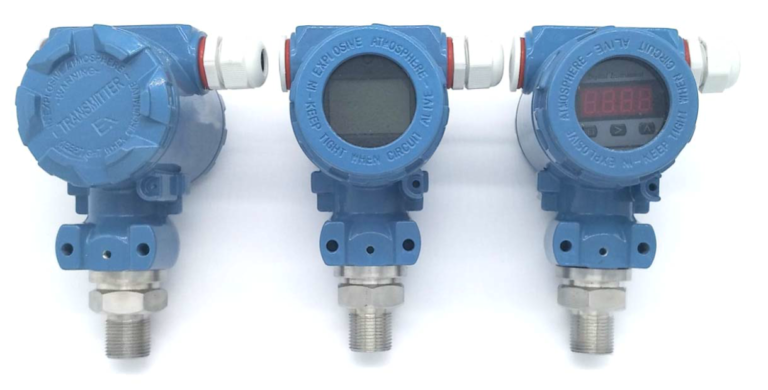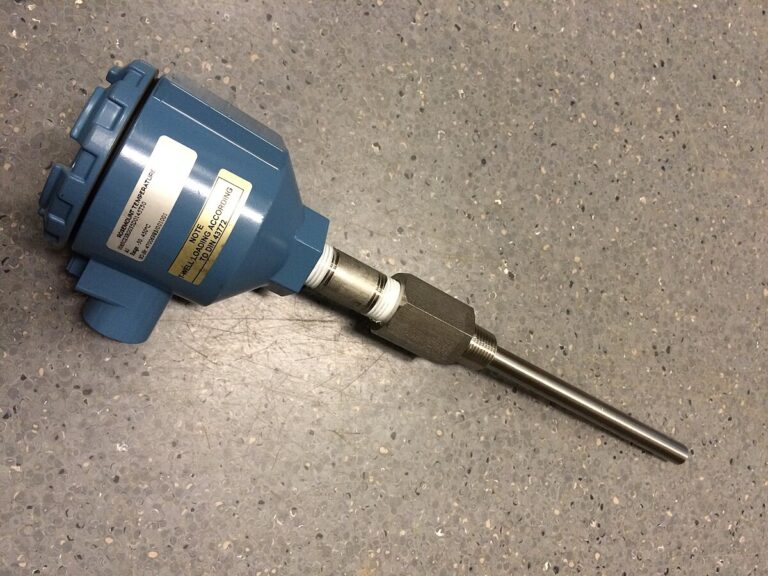Sometimes, users confuse pressure transmitters and temperature transmitters. Although they look similar, there are still big differences in performance and structure. The following editor will introduce the difference between pressure transmitters and temperature transmitters in detail.
1. Definition
– Pressure transmitter: a device used to measure the pressure of liquid, gas or steam and convert these physical quantities into standard electrical signals (such as 4-20mA, 0-5V, etc.) for output. It is mainly used in the field of industrial automation to achieve remote monitoring and control.
– Temperature transmitter: a sensor used to measure the temperature of an object and convert the temperature signal into a standard electrical signal for output. This type of transmitter is usually installed in various industrial environments where temperature changes need to be monitored, such as chemical industry, food processing and other industries.

2. Working Principle
– Pressure transmitter:
– Mechanical: The pressure change is converted into displacement or deformation through elastic elements (such as Bourdon tube, diaphragm box, etc.), and then the potentiometer or other electrical elements are driven by mechanical structure to generate electrical signals.
– Electronic: The pressure change is directly converted into electrical signals by using the principles of piezoresistive effect, piezoelectric effect, capacitance effect, etc.
– Temperature transmitter:
– Resistance temperature detector (RTD): The temperature is measured by using the property that the resistance of metal changes with temperature.
– Thermocouple: The temperature is measured based on the temperature difference electromotive force generated when two conductors of different materials are combined together.
– Semiconductor temperature sensor: The temperature is measured by using the property that the resistivity of semiconductor materials changes with temperature.

3. Details description of each type
The integrated temperature transmitter
The integrated temperature transmitter is generally composed of a temperature probe (thermocouple or thermal resistor sensor) and a two-wire solid electronic unit. The temperature probe is directly installed in the junction box in the form of a solid module to form an integrated transmitter. Integrated temperature transmitters are generally divided into two types: thermal resistor and thermocouple.
The thermal resistor temperature transmitter is composed of a reference unit, an R/V conversion unit, a linear circuit, reverse connection protection, current limiting protection, and a V/I conversion unit. After the temperature measurement thermal resistor signal is converted and amplified, the linear circuit compensates for the nonlinear relationship between temperature and resistance, and outputs a 4-20mA constant current signal that is linearly related to the measured temperature after the V/I conversion circuit.
Thermocouple temperature transmitters are generally composed of circuit units such as reference source, cold end compensation, amplifier unit, linearization processing, V/I conversion, disconnection processing, reverse connection protection, and current limiting protection. It amplifies the thermoelectric potential generated by the thermocouple through cold-end compensation, and then eliminates the nonlinear error between the thermoelectric potential and temperature through a linear circuit, and finally amplifies and converts it into a 4-20mA current output signal. In order to prevent accidents caused by temperature control failure due to thermocouple wire breakage during thermocouple measurement, the transmitter is also equipped with a power-off protection circuit. When the thermocouple wire is broken or the connection is poor, the transmitter will output the maximum value (28mA) to cut off the power supply of the instrument.
The integrated temperature transmitter has the advantages of simple structure, saving leads, large output signal, strong anti-interference ability, good linearity, simple display instrument, solid module anti-seismic and moisture-proof, reverse connection protection and current limiting protection, and reliable operation.
The output of the integrated temperature transmitter is a unified 4-20mA signal; it can be used with a microcomputer system or other conventional instruments. It can also be made into an explosion-proof or fire-proof measuring instrument as required by the user.

Pressure transmitter
Pressure transmitter, also known as differential transmitter, is mainly composed of pressure measuring element sensor, module circuit, display head, case and process connection parts. It can convert the received pressure signals of gas, liquid, etc. into standard current and voltage signals to supply secondary instruments such as indicator alarm, recorder, regulator for measurement, indication and process adjustment.
The measurement principle of pressure transmitter is: process pressure and reference pressure act on both ends of integrated silicon pressure sensitive element respectively, and the differential pressure deforms the silicon chip (the displacement is very small, only μm level), so that the full dynamic Wheatstone bridge made of semiconductor technology on the silicon chip outputs mV voltage signal proportional to pressure under the drive of external current source. Due to the excellent strength of silicon material, the linearity and variation index of output signal are very high. When working, the pressure transmitter converts the measured physical quantity into mV voltage signal and sends it to the differential amplifier with high amplification factor and can offset temperature drift. The amplified signal is converted into the corresponding current signal by voltage-current conversion, and then undergoes nonlinear correction, and finally generates a standard current and voltage signal that is linearly corresponding to the input pressure.
